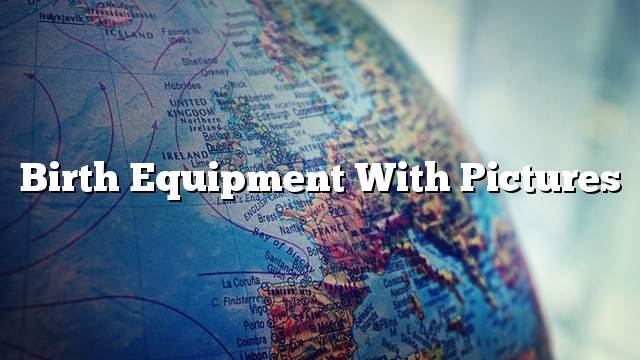Welcome to the new mother Before the most important and exciting moment in your life, we have provided you with a number of tips to make this experience very enjoyable and easy.
We recommend access to the hospital with three bags:
A small bag for necessary purposes during delivery, a large bag for necessary purposes after birth, and also a bag with the purposes required for the husband, and so are ready and ready for the moment arrival of “owners”
Documents:
ID card.
Post-Pregnancy Card.
Pregnancy tests and blood test results in the last month before birth.
Medical documents related to the treatments you received during pregnancy as well as non-pregnancy documents.
The page of your birth program, but this is not compulsory!
Delivery equipment (small bag)
Rob or cloak – if you want to roam before birth.
Sleeping shirt – will not hurt you if you get dirty during the delivery process (if you do not want to use a sleeping shirt from the hospital).
Cotton socks.
Home shoes
Drying lips pen
Tape to tie hair
Medical glasses for mothers who use glasses – at one point you will have to remove contact lenses.
Natural oil for massage and buds of wheat or other.
Additional padding
Natural herbal tea for calming / strengthening
Tennis balls inside massage stockings
Hempathia granules (homologous medicine) to accelerate birth and others.
Quiet music + recorder (if not available in the delivery room)
Spry of mineral water for recovery or moist tissue.
Postpartum Equipment (Big Bag)
A clean nightgown
Breast feeding bra
Breast feeding gauze
Cream for sensitive or injured nipples (Raphael or other natural oil).
Breast feeding.
Lactation guide phone number.
Special health bandages for bleeding.
Oil for Pole (Calendula, (Plush) Comfrey, Mercy), New and Closed Bottle. a towel.
Bathing tools (toothbrush, toothpaste, deodorant, shampoo and hair conditioner).
Hair brush.
Wet tissues, Paper tissues.
Cream for the skin, body cream and cream for the hands.
Makeup tools.
Plastic cups.
Dried fruits and bran to help digestion.
Comfortable clothes and flat shoes to leave the hospital (at this stage you will appear like you are in the sixth month of pregnancy,
Child equipment:
Special seat for child by car – compulsory.
Clothes to leave the hospital – shawls and suit.
Haram (depending on the weather).
Stockings and hat.
Nail clip for baby
Diapers.
Cloth diapers.
Go to the hospital and receive the crown or queen :
1. When labor signs appear.
2. Sudden bleeding.
3. Net water drain wet clothes of non-blood.
4. Take water mixed with green.
What is required of you?
In the first stage (ie the stage of cervical expansion):
1. Do not tighten down the abdomen.
2. Breathe deeply.
Sleep on the left or right side.
4. Prefer not to yell or curse because it does not relieve pain, but bothers others and burdens pregnant.
In the second stage (ie the actual birth stage):
- Follow the doctor’s instructions by taking deep inspiration and then pushing down during uterine contractions such as: Tensile when carrying something heavy, then taking deep breath between contractions
The doctor may need to cut the perineum to help the fetus exit, especially in the pristine and under the influence of local anesthesia.
In the third stage, the stage of the placenta exit:
Empty the bladder if you feel urinated.
When placental detachment occurs, a rapid blood flow occurs. The doctor or doctor withdraws the umbilical cord. Please push down to help them. The doctor will then massage the uterus to help him contract.
And the delivery process is over, the doctor or doctor may sew the perineum under the influence of local anesthesia.
Bleeding: Can indicate placental detachment.
Tear rupture (water head): The flow of water from the vagina, it may be an early rupture and you have to induce birth if the reproductive does not develop quickly.
Contractions of the uterus excess in frequency and strength and duration . In the early stage, the cramps will last from 15 to 20 seconds, and in the next stage, it will increase to 40 – 50 seconds from 2 to 3 times every 5 minutes. At this time, you should focus on breathing techniques (Lamis style) to simplify pain and relaxation.
If the pain becomes strong, you can ask for analgesic medication.
Points for prenatal review:
Set up an emergency call plan:
- Your husband’s office phone number .
- Hospital phone number to contact the medical staff.
- The phone number of relatives.
- The person should help you while you are in hospital and after returning.
- Police phone number.
My order is a person who will help you out after giving birth
Put a bag that you will carry with you to the hospital and let your family know where you will keep it.
Make sure you have the correct hospital address.
Take the ride if you are not with your family.
Make a list for your spouse when you are in hospital, bills, payments.
Always take a shampoo and shampoo for your hair as you begin to squeeze at any moment.
Prepare yourself for signs of labor such as a blood mark, and rupture of the membrane.
Before going to the hospital you should do the following things
- Take a warm bath.
- Shaving pubic hair.
- Take off any gold or jewelry.
- Do not forget to visit your doctor and everything related to your pregnancy.
- Drain the bladder and if you can take an enema to get rid of the waste
When you arrive at the hospital: If you are in an early state, you will return home. If you are in a hospital, you will be admitted to the hospital.
Your access to the hospital may require causes other than birth symptoms such as:
- Hypertension .
- The presence of albumin in the urine.
- Unnatural status of the fetus.
- High blood sugar.
- It has a fetal pulse.
